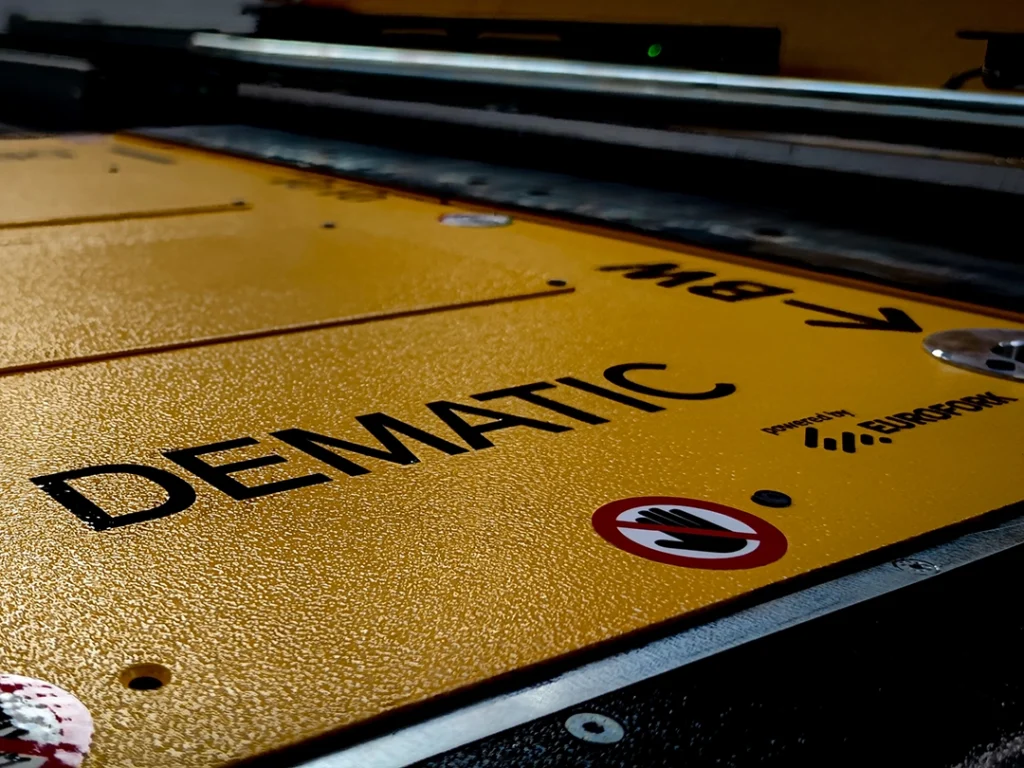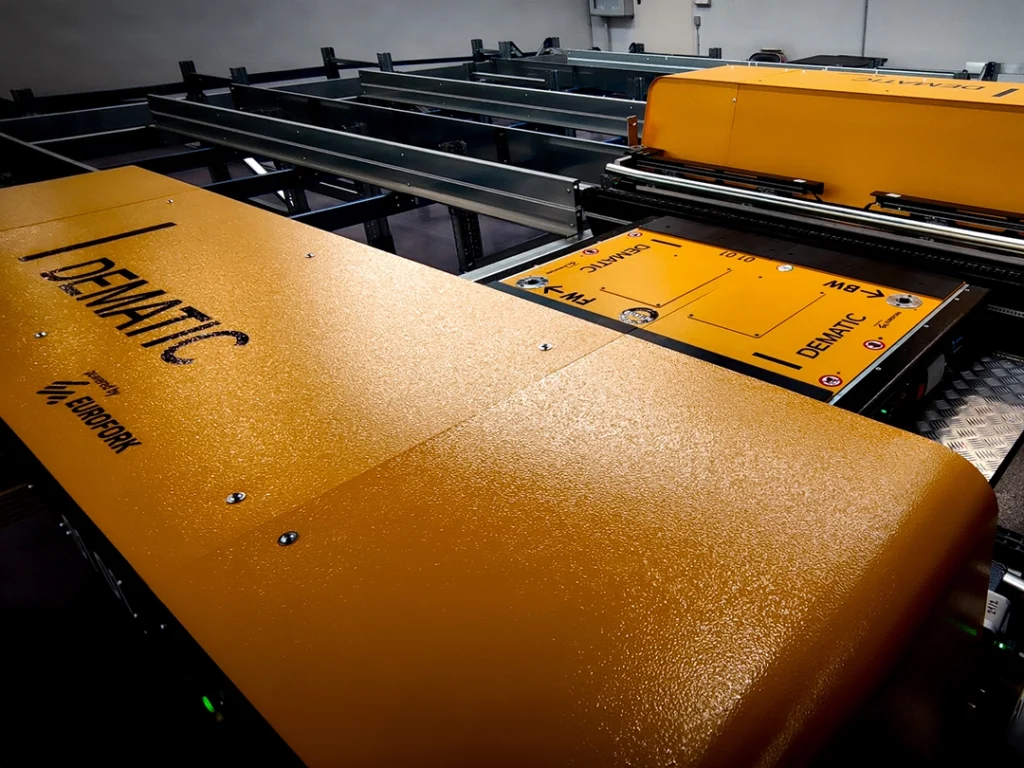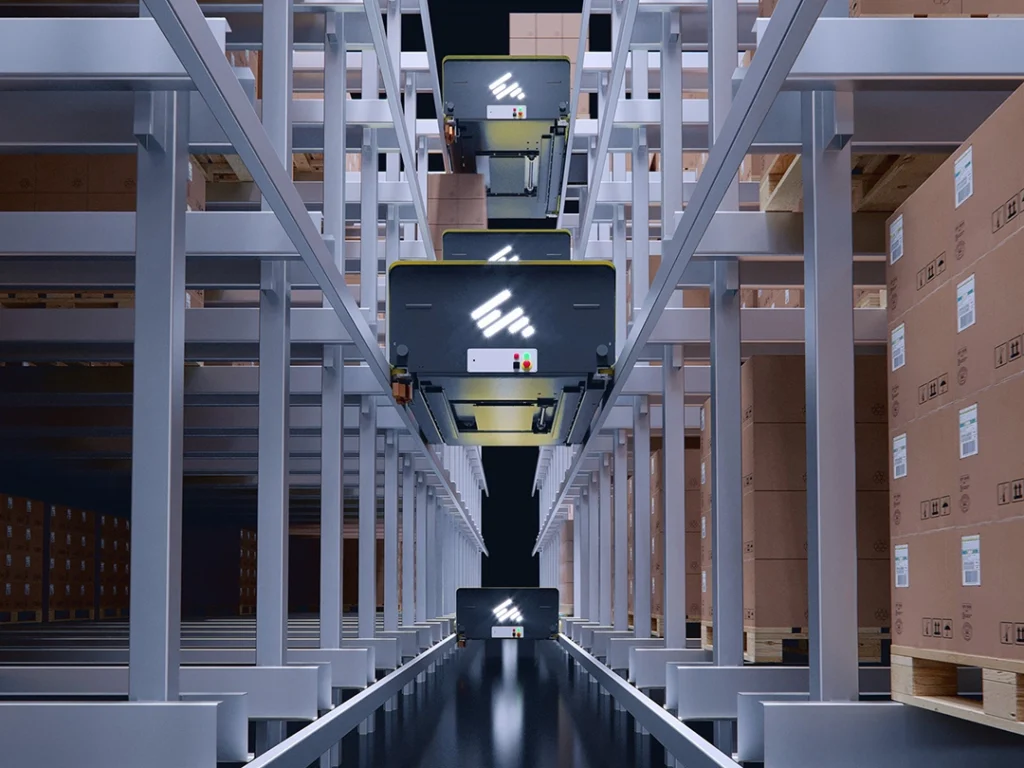ESMARTSHUTTLE
Automotive
HUGE VOLUMES AND MAXIMUM FLEXIBILITY: THE AUTOMOTIVE MADE SIMPLE BY ESMARTSHUTTLE®
Dematic, a leading provider of intelligent automated systems for warehousing and distribution centers, selected Eurofork®’s ESMARTSHUTTLE® pallet shuttle system to ensure optimization in storage & retrieval and maximum flexibility in load handling within their East Midlands (United Kingdom) distribution centre for an end user involved in the automotive sector.
Results

MAXIMUM FLEXIBILITY IN HANDLING DIFFERENT LOADS

HIGH PRODUCTIVITY AND EFFICIENCY

REDUCED OPERATING TIMES
Requirement
Having to manage large volumes of goods on pallets while aiming to increase productivity, automation immediately appeared as a necessary path. However, in defining a project that would be fully effective, one had to contend with the wide variety of materials and components managed in the new distribution centre, essential for supplying the nearby production lines. Approximately 5,000 items varying in type and size were to be stored and retrieved: from the smallest bolt to a windshield or a dashboard. Thus, the solution had to meet two very specific requirements: manage 25 types of unit loads (steel pallets, plastic pallets, CHEP pallets, and Euro pallets) with depths of 1,000, 1,400, 1,600, or 1,800mm and a fixed width of 1,200mm; sequence the items picked from the distribution centre to fulfil production orders.
Sign up and
Read more
Enter your details to download the full case study





